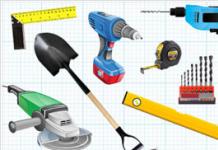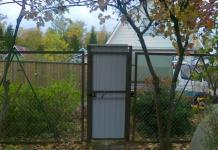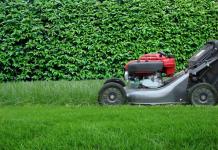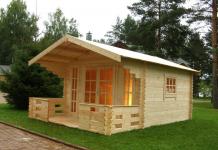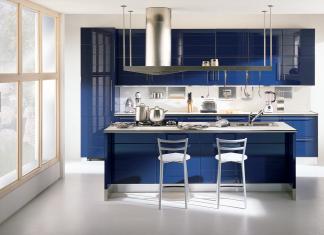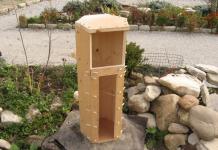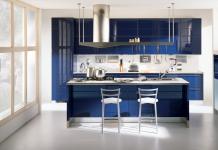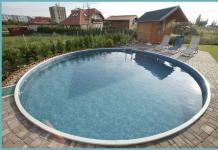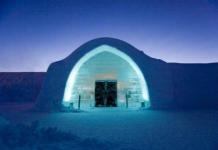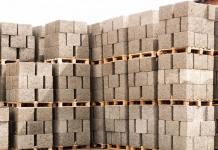Architects and designers often use forged elements in their work. Openwork metal grates covering fireplaces, or beautiful balusters on the stairs look elegant and noble.
If you know how to perform forging and learn this craft, you can create original products yourself.

This activity is suitable for everyone who likes to do physical work and who is ready to get acquainted with the technology and features of the choice of metal.
What do you need to know about forging?
Forging is a process of processing a special workpiece. Its purpose is to give the metal the required dimensions with a shape. There are hot forging and cold forging.

The master needs to get acquainted with both varieties in order to know the advantages and disadvantages of each.

Hot forging method
In the hot method, the metal workpiece is strongly heated. As a result, the metal becomes plastic. Hot forging gives the workpiece the desired dimensions and desired shape. A variety of work options are available to the master.

Heating a metal workpiece has its drawbacks. First of all, it is necessary to equip a special room. You will need to buy a forge, for which you will have to buy fuel.
Fire safety rules must be observed, it is important that the master knows how to work with fire.

Knowing the temperature conditions used in the forging process, you can easily select the desired type of forging.

Cold forging method
Cold forging is a labor intensive process. To achieve the desired shape from a metal blank, it is bent, pressed and welded. The execution technique is a little simpler compared to the hot method.

The workshop does not require a lot of space, and for its arrangement you do not need to purchase a special forge, it is enough to buy a forging machine.

The process of manufacturing a product involves working with semi-finished products. Once a mistake has been made, it cannot be corrected.

Choosing a metal
Metals with certain properties are suitable for hand forging. The more ductile the metal, the easier it is to change its shape. However, plasticity is inextricably linked with strength.

An increase in one characteristic inevitably entails a decrease in another. When buying a workpiece, the master must know exactly what composition it has.

Decorative forging elements are made from copper, steel, duralumin or brass. In addition, alloys may also be used. Information about metals that can be easily forged can be found in the Steel and Alloys Grader.
What tools are needed for forging?
Inventory varies depending on the forging method. A blacksmith's forge with an anvil, hammers with tongs will be needed for hot forging.

For the cold method, you need the Gnutik tool, which allows you to bend the workpiece at an angle, and the Snail forging machine, which you can do yourself. The last machine allows you to create decorative elements with a spiral shape.
Note!


In addition to the basic tools for the cold method, Flashlight, Wave, Twister, ring machine and others can be additionally used.

The modern market offers industrial machines designed to perform technological operations. In the forging photo you can see the product made on the Master 2 machine from MAH.

Hand forged
In order for the workpiece to acquire the desired shape, the master must use different techniques and methods in his work. You will need to acquire various tools and master different technologies.

The cold forging method does not require much effort from the master. The following stages are distinguished in the work:

- creating a drawing or sketching a decorative element;
- procurement of blanks;
- forging process.
Today, a drawing can be done using a computer program on your own or ordered by professionals. The project will allow you to calculate how much metal blanks you need to purchase before starting work.
Note!


The main forged elements are represented by the following groups:
- Paws. The end of the metal rod is given a certain shape.
- curls. The ends of the rod can be bent in one or two directions.
- Rings. Decor elements are made of rods with a square or round section.
- Torsion. It is characterized by helical twisting along the axis.
3 common technologies are used: drawing, bending and twisting.

- The hood allows you to increase the length of the metal workpiece, reducing the value of its cross section.
- Bending makes it possible to bend any part of the workpiece at an angle.
- Twisting is a technology in which the workpiece is twisted along the axis. For twisting, the Twister machine is used.

All elements are assembled together and fixed by welding. These operations are performed on a special table. Homemade cold forging does not require special skills.

DIY forging photo



Note!



Everyone in our family now knows the word Paper Art (http://stranamasterov.ru/user/151613). Because the whole house is a decorating workshop. Today I'm back with the box. And again from a mobile phone (probably three years already in this box). It was her turn too. It turns out being Plyushkin is not so bad. Where else would I find objects for my talents?

The medallion is cast from plaster. I have such a chain strap made of metal medallions, hollow inside - it’s just very convenient to make castings ...

I made the side panels the same this time.

And this is the work of my daughter Alevtina. I explain: the dots on the glass are millet. I have strips of corrugated cardboard on the box, balls and flower-leaves - cold porcelain, and all curls are napkins, simply twisted into a flagellum. The flagella were twisted from one layer of a napkin. Rolled onto fabric. The thickness of the flagellum is a little more than 1 mm. Oh, yes, I forgot about the pasta ... On the lid, the asterisks are Italian-made pasta. And the effect of the metal is created thanks to the gold tinting. Painted with black acrylic, and on top acrylic bronze (glass) and acrylic gold (box).

There is a great idea how to create a chic wall decoration out of four photo frames. If you looked at the photo, you thought it was metal art forging. And no matter how good it is, sometimes its value is impressive no less than the work itself! And if I will argue that such an ornament is quite affordable and at very modest material costs. Not only that - you can do it yourself, if you have, of course, your desire. Doubt? To convince you, I will present a list of things necessary for the implementation of the project "".
- Photo frames 4 pieces, 10 by 15 cm,
- Reiki 2 pieces, meter long and 1 cm wide,
- glue gun,
- Toilet paper rolls (about 20 pieces)
- White glossy spray paint,
- A ton of patience.

And so let's get started and start by cutting each rail into 3 parts. The length of the resulting rails will be approximately 33 cm. Now, using two rails and a glue gun, we fix two photo frames at a distance of 8 cm from each other. Already with the help of one rail, also glued from the inside, we fix the remaining two frames at the same distance. Place the first row of frames (fastened with two rails) on the plane at a distance of the same 8 cm above the second row (with one rail).

It remains to connect the resulting rows with each other with two slats, also using a glue gun. I repeat once again that all the above described work is carried out on the reverse (wrong) side of the frames. As you work, refer to the photographs so as not to make unnecessary mistakes.
For further work, we need to turn the resulting workpiece. This must be done carefully, as at the moment the structure is still fragile. But do not rush to worry about this, after you add "artistic forging", the structure will be stronger.
 Now we're going to work on our extravagant ingredient, cardboard toilet paper rolls. It is necessary to cut strips of 7 mm from them. Don't forget to check out the photos! From one roll, it will be necessary to cut longitudinal strips also of 7 mm each for straight “forging” elements.
Now we're going to work on our extravagant ingredient, cardboard toilet paper rolls. It is necessary to cut strips of 7 mm from them. Don't forget to check out the photos! From one roll, it will be necessary to cut longitudinal strips also of 7 mm each for straight “forging” elements. 
It's time for the most interesting -! We start by making the central flower. We wind the strip on the pencil. Not very tight. Glue the tip so that the resulting curl does not straighten out. We leave one element round - the center of the flower, pinch 8 elements from two opposite sides - these are the petals of our flower. We assemble and glue together the central element. Now you need to give it time to dry. In the meantime, the flower dries, let's begin to collect the pattern of our conventionally called forging.



We glue a circle made of prepared paper curls to the slats in the central part. As soon as the flower dries, we fix it, also with glue, carefully in the center of our installation.


We continue to glue curly paper blanks, creating a pattern. As soon as the pattern is completed on one side, it proceeds to its mirror image from the opposite side. Before gluing the curl, attach it to the already finished pattern in order to compare and if you need to add or straighten it a little. And thus achieve a more accurate result, a mirror effect. Gradually and carefully complete the pattern.

The final touch is making a 3D flower. To do this, we make eight arrows with a forked end. We glue the arrows into the center with forked tongues up. 
 Now you need to carefully paint over the resulting installation with white spray paint.
Now you need to carefully paint over the resulting installation with white spray paint.


That's all! It remains to insert photos and place the work in a conspicuous place! The result is a chic interior decoration. In addition, this decor turned out to be functional, and has not only an aesthetic effect, but also has a practical application.

Create with pleasure!
Forged decor of building facades, home and outdoor furniture, gates and fences, made by the hands of a skilled blacksmith, are an indicator of the status, presentability and taste of the owners. Laconic or intricate openwork patterns invariably attract admiring glances.
Imitation of forging is to bend the metal, and its connection is made by welding.
Their only drawback is their high price. After all, real artistic forging is done by hand and often according to individual sketches. Forging imitation can be a good substitute for those who want to decorate their homes with metal products.
What is cold forging?
Real artistic forging involves the processing of metal heated to the required temperature. For its implementation, a separate room, a forge furnace or forge and special tools are required.
To imitate it - cold forging, you only need a free room, for which even a garage or a barn is quite suitable. Cold forging is quite affordable for those who want to make decorative lattices, a fence or some piece of furniture on their own. Its essence lies in the bending of metal bars with their subsequent connection by welding.

Products made using this technique have much greater strength and durability than cast or stamped. This is due to the fact that when using special equipment to give the necessary shape to a metal rod, simultaneous pressing and bending of the metal is performed. The additional pressure resulting from processing contributes to an increase in strength characteristics. True, if a mistake was made, it will be quite difficult to fix the damaged part.
The most difficult stage in the technological sense of forging simulation is the assembly of the product. It is necessary to perform welding work and clean the seams with high quality, making them invisible.
Like any technology, cold forging has its advantages and disadvantages. The advantages include:
- the simplicity of the manufacturing process, accessible even to inexperienced beginners;
- the use of machines for bending blanks allows you to reproduce with 100% accuracy the required number of products without much difficulty, for example, gratings for a fence.
- using standard machines, it is impossible to make a unique product;
- having gone through a forced deformation, the metal will still tend to return to its original shape, although this is a very slow process.
Back to index
Cold forging equipment
In addition to the welding machine and the ability to handle it, home craftsmen who decide to try their hand at making forging with their own hands will need special machines.
Many craftsmen make them themselves, because their design is quite simple. There are universal and narrowly targeted devices. The advantages of universal machines lie in a wide range of functions, but they will quickly become unusable due to active operation or produce low-quality products. Therefore, it is preferable to have several machines for different operations.
A complete set of cold forging tools consists of the following hand tools:

- a wave that allows you to get sinusoidal bends of the bar;
- snail - for the manufacture of all kinds of spirals;
- twister - for twisting the workpiece along the axis;
- bender - for bending a metal rod at the required angle;
- flashlight - for the manufacture of special decorative elements;
- ring making machine.
The machines used in cold forging can be manual or electric. If this activity is a simple hobby, then manual equipment is enough. In workshops, electrical equipment is usually used, which significantly increases productivity.





